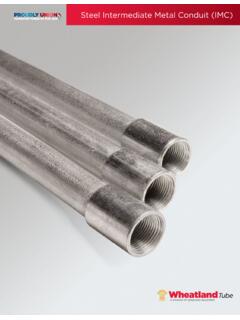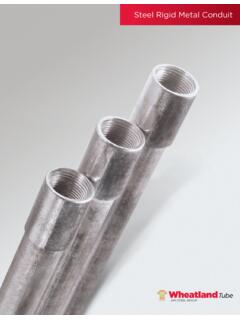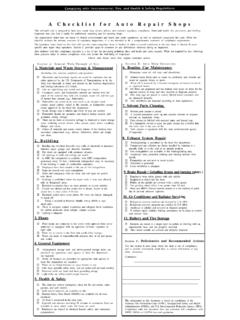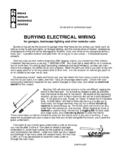Transcription of A Checklist for Auto Repair Shops - Tips for Auto ... - …
1 A C h e c k l i s t f o r A u t o R e p a i r S h o p s This self-audit tool is designed to help auto Repair shop owners achieve and maintain regulatory compliance. Municipal health, fire prevention, and building inspectors may also find it useful for preliminary screening and for assisting Shops . The requirements listed here are based on federal environmental and health and safety regulations, as well as nationally recognized fire code. While the Checklist includes the primary concerns of regulatory inspections, it is not intended to be a comprehensive statement of compliance requirements.
2 The regulatory items listed on this form fall into two main categories: those in Section A relate to overall conditions at the site; those in Section B cover specific auto Repair shop operations. Section C provides space to comment on any deficiencies observed during an inspection. Also included with this compliance Checklist is a list of tips for preventing pollution, fires, and health and safety hazards. While not required by law, following these practices helps to reduce compliance costs and ensure the well-being of employees. Check only those items that require remedial action.
3 Section A: General Walk-Through of Site Section B: auto Shop Operations 1. Materials and Waste Storage & Management 6. Routine Car Maintenance (Including oils, solvents, antifreeze and gasoline) (Managing waste oil, oily rags, and absorbents). o Flammable and hazardous liquids are stored in containers that are o Drained waste fluids such as waste oil, antifreeze, and solvents are either approved by the US. Department of Transportation or by the stored in separate drums or tanks. State Fire Marshall, or listed and labeled by the National Registration o Waste oil is removed by a licensed transporter or burned on-site in and Testing Laboratory (UL-listed).
4 An approved heater. o Lids are tight-fitting and sealed, and bungs are closed. o Oil filters are punctured and hot drained over waste oil drum for the o Containers, tanks, and flammables cabinets are labeled with the required amount of time, and then recycled or disposed properly. name of the material they hold (for example, waste oil) and the type o Oily shop rags are placed in sealed, labeled metal containers and of hazard they present ( , flammable). are managed properly. o Flammables are stored in an area (such as an air-tight metal o Oily absorbents are disposed according to state regulations.)
5 Cabinet, metal cabinet vented to the outside, or flammables storage room) approved by the local fire department. 7. Solvent Parts Cleaning o Waste storage area is labeled and limits of area are marked. o Solvent parts cleaner is closed. o Flammable liquids are grounded and bonded during transfer, and o A licensed transporter picks up and recycles solvents or disposes grounded during storage. solvents as hazardous waste. o There are no leaks or excessive spillage in chemical or waste storage o Parts cleaner is labeled with material name and hazard type. areas, including around solvent sinks, pumps, pipes, hoses, couplings, o If a flammable solvent is used, the parts cleaner has a fusible link fittings, and valves.
6 That locks shut in the case of fire. o Drums of materials and wastes stored outside of the building have o Parts cleaner is registered with the state environmental agency secondary containment ( , berms). Otherwise, drums are empty (if required). and clean. 8. Exhaust System Repair 2. Building o Welding/cutting is permitted by the local fire department. o Building has two-hour firewalls (two walls of sheetrock or masonry) o Compressed gas cylinders are firmly installed by chaining to a between Repair garage and attached structures. portable dolly or to the wall in an upright position.
7 O Fire doors are equipped with automatic closures. o Fire extinguishers are available in the welding/cutting area. o All openings in walls and ceilings are sealed. o Employees wear protective clothing and welding helmets with o A 40BC fire extinguisher is available, with 10BC extinguishers shields. positioned every 50 feet. (Additional extinguishers may be necessary o Flammables are not used or stored nearby. if the building is made of combustible materials.) o Machinery is grounded. o Employees have been trained in the use of fire extinguishers. o Local ventilation is adequate.
8 O Signs are posted over each extinguisher. o Aisles and emergency exits are clear, and exit signs are posted 9. Brake Repair ( Grinding drums and turning rotors ). over doors. o Employees wear safety glasses with side shields. o Smoking is prohibited where the Repair work is done and allowed o Equipment is bolted into the floor. only in designated areas. o Pullies on the grinder are covered with a safety guard. o electrical receptacles have no open grounds or reverse polarity. o The grinding wheel offset is no greater than 1/8 inch. o Circuits are labeled and the circuit box is closed.
9 Access to the o Shop uses HEPA filtered vacuum system or a wet method of grind- circuit box is clear within 5-10 feet. ing to prevent asbestos exposure. o electrical outlets have cover plates. No wires are frayed, damaged, or taped off. 10. Air Conditioner and Radiator Servicing o Wiring is enclosed in electrical metallic tubing (EMT) or rigid o Refrigerant recovery machines are licensed by EPA. metal pipe. o Refrigerant recovery operators are certified by EPA. o There is adequate central ventilation and adequate local ventilation o Antifreeze is labeled and recycled or disposed properly.
10 For carbon monoxide from tailpipe exhaust systems. o If radiator Repair includes brazing, procedures are in place to control o Lighting is adequate. and monitor lead. 3. Floors 11. Battery and Tire Storage o Floor drains are connected to the sewer (with approval from sewer o Batteries are stored in a single layer on pallets or shelving with an authority) or equipped with an approved oil-water separator or impermeable base, and are properly recycled. tight tank. o Tires stored outside are covered and properly disposed. o There are no cracks in the floor that would allow leakage.







